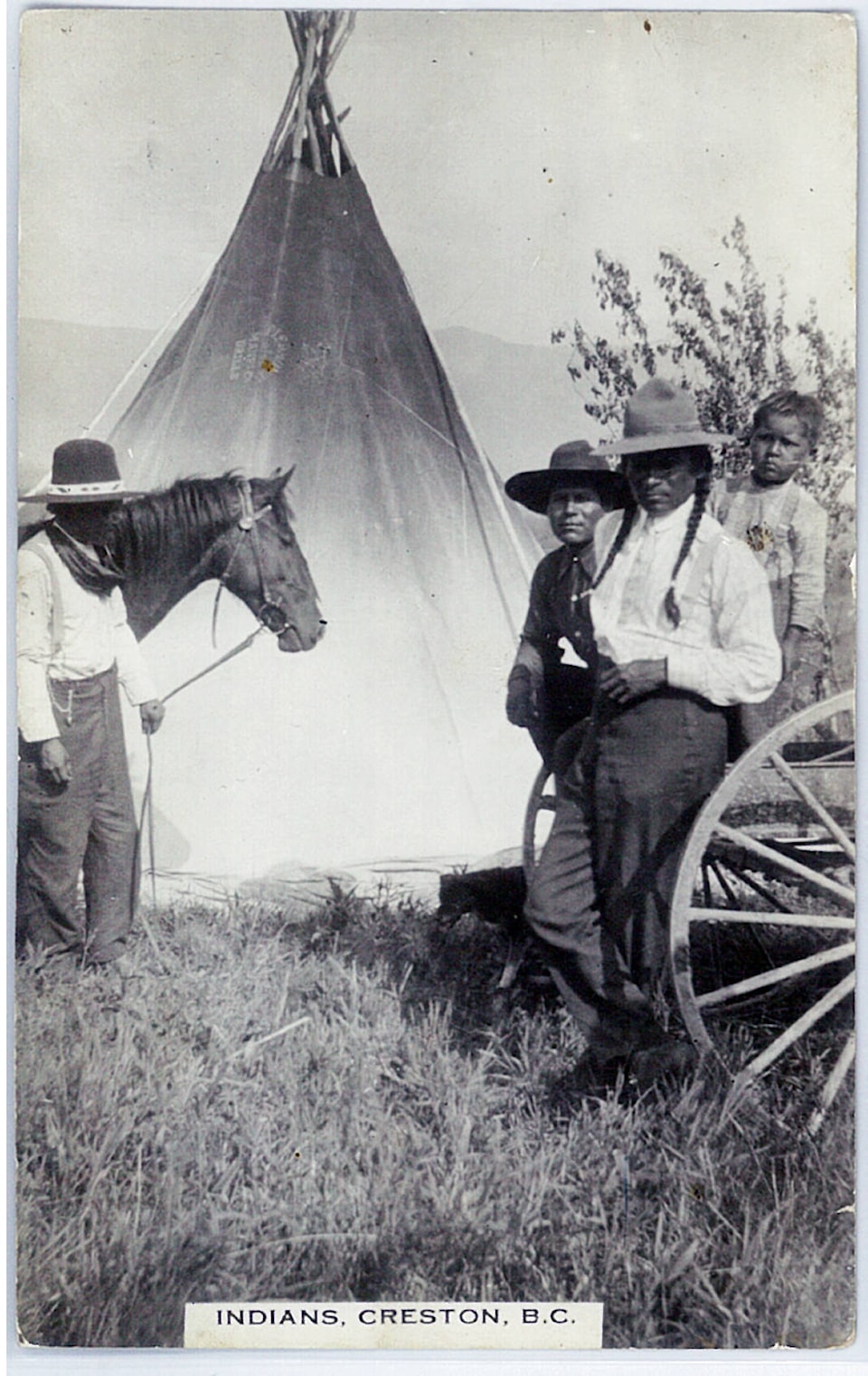Three hundred twenty-first in a series on West Kootenay/Boundary place names
Last week we started to dig into the origin of Kootenay, which is indirectly derived from Ktunaxa, one of the Indigenous groups on whose traditional territory we live.
Although long since debunked, you’ll still often see the claim that Kootenay means “water people” or “many waters” or “people of the water/lakes.”
This false etymology first shows up in the 1897 Yearbook of British Columbia: “Kootenay – From the Indian name Kootenuha. May mean ‘people of the water.’ Mr. McKay thinks it is a combination of ‘co’ (water) and ‘tinneh’ (people).”
(Mr. McKay was Joseph W. McKay of the “Indian Office” in Victoria who the same book described as “probably the best local authority on the Indians of British Columbia.”)
It was later suggested that this notion was actually based on an Athabascan (Dene) translation, while other sources claimed it was of Algonquin origin.
In any case, European settlers found the “water people” explanation so satisfying that most didn’t question it — although 20th century ethnographers did try to determine the actual derivation and meaning of Kootenay and/or Ktunaxa.
In their First Nations’ Ethnography and Ethnohistory in British Columbia’s Lower Kootenay/Columbia Hydropower Region (2000), Randy Bouchard and Dorothy Kennedy write that Kootenay/Kutenai was an anglicization of kotonawa, a Blackfoot word used to refer to the Ktunaxa people and possibly also derived from Ktunaxa.
In 1918, anthropologist Frans Boas suggested Ktunaxa came from a verb meaning “to go out into the open.” Alternatively, it might relate to a verb meaning “to pull a hide legging over the nose of a canoe” or to a verb for “to eat lean meat.”
Harry Holbert Turney-High in Ethnography of the Kutenai (1941), wrote that use of Kootenay, or Kutenai “follows white tradition by giving these people the name by which their enemies called them. It is without exception one which they object to … All informants but one agree that Kutenai is a Blackfoot word, derived from the Piegan habit of calling them ktonai or ktunai.”
Although Turney-High’s informants used the term Ktunaxa (or ktonaxa or tunaxa), many preferred to refer to themselves as San’ka. However, “No one professes any knowledge of what san’ka means. Even the oldest informants say that it is an obsolete term whose meaning is completely forgotten.”
Both Ktunaxa and Ksanka are used to describe the people as a whole, as well as their language. Ksanka is the more common term in Montana while Ktunaxa is generally used elsewhere.
The Ktunaxa Nation Council began in 1970 as the Kootenay Indian District Council. The name was changed in 1990 to the Ktunaxa Kinbasket Tribal Council and in 2005 to the Ktunaxa Nation Council.
In Canada, the Ktunaxa Nation includes the Akisqnuk First Nation of Windermere, Akan’kunik (Tobbaco Plains Band) of Grasmere, ʔaq’am (St. Mary’s Band) of Cranbrook, and the Yaqan Nukiy (Lower Kootenay Band) of Creston. Two other bands live in northern Idaho and northwestern Montana.
While Kootenay is essentially a corruption of another word, it’s a hardy one.
Using Google as a measure of contemporary popularity, a search for Kootenay returns 5.69 million hits, while Kootenai turns up 3.2 million, Kutenai 706,000 and Ktunaxa 162,000.
And while Ktunaxa is now widely used in BC, linguistic and ethnographic works often prefer Kutenai.
BC has 35 official geographical features named Kootenay or Kootenae. Besides the lake and river, there’s also a bay, inlet, community, locality, railway point, pond, creek, ridge, channel, land district, provincial park, national park, and national historic site, plus reserves, mountains, ranges, passes, and regional districts.
While most of these are actually in the Kootenays, a couple are on Haida Gwaii.
Kootenay also shows up in four geographic names in Alberta. In Idaho and Montana, over 50 officially designated geographic names have Kootenai in them, although that includes government buildings, schools, and churches.
An 1896 brochure published by the Great Northern Railroad titled The Kootenai Country noted the spelling variations of Kootenay and then added: “In all cases there is little or no difference in the pronunciation, the accent being given to the first and last syllables, the I in the American word being silent. An easy way to settle the difference would be to spell it as it is pronounced — Kootna.”
Most of us on both sides of the border today say koot-nee, but you’ll also hear koot-in-ee. Those from outside the region might go with koot-nay or koot-in-ay.
